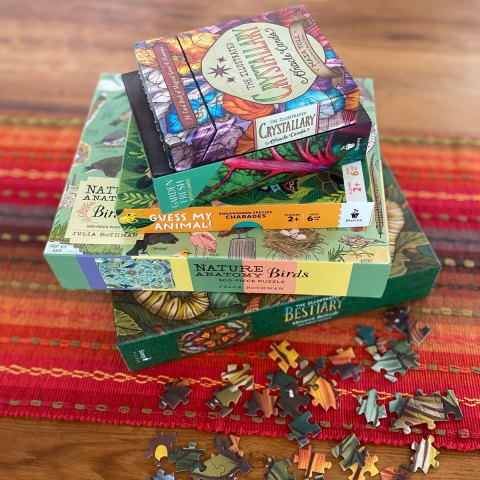Spring Swarm: Honey Bees in a Cherry Tree
When illustration coordinator Ilona Sherratt’s backyard cherry tree became the stopping place for a swarm of honey bees in search of a new hive, a call to a local beekeeper saved the day.
Late Saturday afternoon my gardening chores were interrupted by an amazing event: From out of nowhere a swarm of bees, looking for a new home, descended onto the cherry tree in my yard and decided to spend the night there.
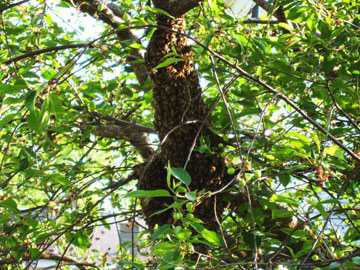
The bees began to cluster on one particular branch, all to protect the queen, which had landed there to rest. More and more bees arrived, until the swarm was about the size of a basketball. Honey bees have become rare in our area, so I called several people to try to find a beekeeper who might be interested in taking them. I finally reached Tom Stefanik, the president of the Northern Berkshire Beekeepers Association, who lives ten minutes away, and he said that he’d come for the bees at 8:30 the next morning.
As the evening went on and the temperature started to drop, the mass of bees became more tightly packed, as the workers used their bodies to generate heat and protect their queen.
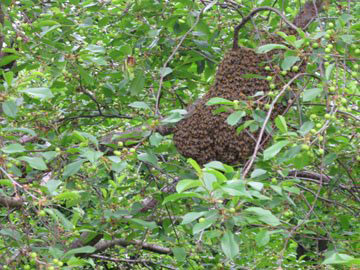
As night fell, the swarm was very still, except for a faint buzzing coming from the inside.
Bright and early Sunday morning the bees were just beginning to stir as Tom arrived. He immediately identified them as Italian honey bees, which are known for their docile nature.
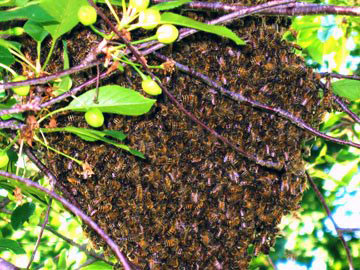
He explained that they might have come from someone’s hive or from a wild colony in the area. Honey bees swarm in the late spring when they become active, and their numbers explode as they feverishly begin to make and store the honey they will need to survive the next winter. Several queen bees are hatched. When the hive becomes too small for all the new bees, the old queen and half of the colony leave in search of a new home. They will fly up to two miles searching for a place to live. He estimated that “my” swarm contained between 10,000 and 20,000 bees, and weighed between three and four pounds.
The bees would be introduced into a hive that Tom had prepared especially for them. If the bees liked their new digs, they would begin foraging for nectar and pollen. I asked Tom about the problems that bees have been experiencing with mites and whether the bees in my yard had them. Tom said that they probably did and he’d treat them with formic acid to kill the mites after the bees were settled in.
After a few minutes more chatting, the big moment arrived. Donning his beekeeper’s garb, Tom held a large cardboard box underneath the swarm and gave the branch they were attached to a good shake.

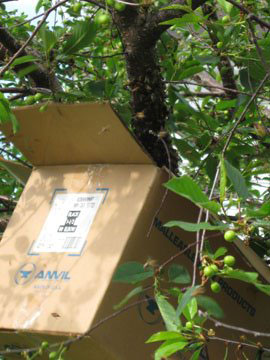
Most of the bees fell into the box with a soft thud. Tom taped the box shut, and off they all went. He wasn’t able to collect all the bees, however. A sorry remnant of several hundred bees was left behind, abandoned to their inevitable fate.
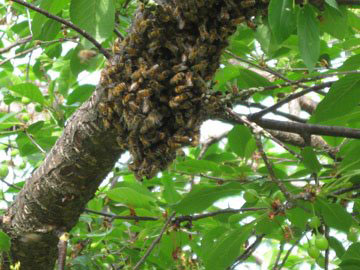
These angry and confused insects buzzed and chased us throughout the day, and this morning I found them clinging to each other in a small forlorn cluster at the spot they had so bravely defended the day before.
This morning we found a jar of honey on our front steps and a note from Tom thanking us for the bees. They seem to like their new home. Once the cherries are ripe, I will make a pie with the cherries harvested from that tree and sweetened with Tom’s honey.
